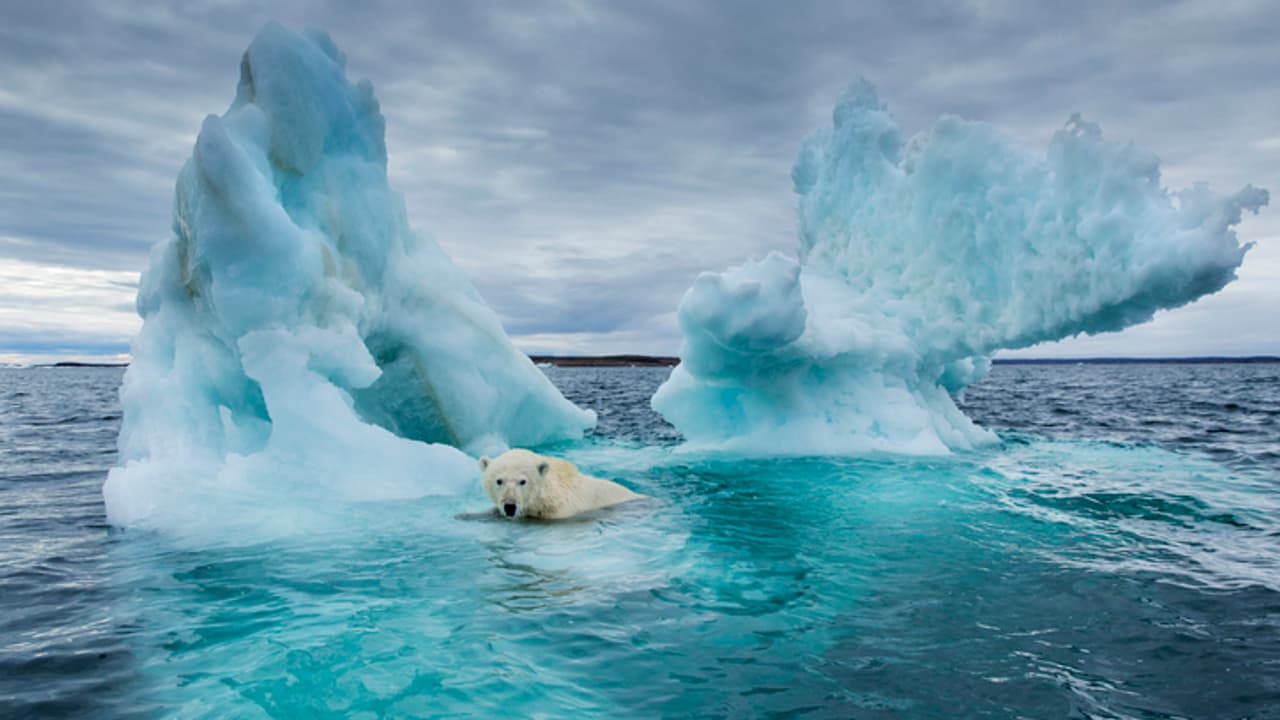As Arctic ice melts, a surprising process unfolds. Learn how nitrogen fixation is fuelling algae growth, supporting marine life, and impacting carbon absorption.
When we think about the melting of Arctic sea ice, we often imagine disappearing habitats, rising ocean temperatures, and the loss of polar bears. However, recent research reveals something unexpected happening beneath the surface. As the ice melts and moves away, it might actually be creating the proper conditions for microscopic life to grow; life that could significantly influence the future of the Arctic’s entire marine environment. The study, published in Communications Earth & Environment, involved experts from Denmark, Sweden, Germany, France, and the UK.
Life Beneath the Ice
At the centre of this discovery are algae, tiny plants that serve as the foundation of almost every ocean food chain. From the smallest plankton to larger creatures like fish, seals, and whales, most sea life depends on algae in some way. However, there’s a challenge: algae require nutrients like nitrogen to grow, and nitrogen is usually scarce in Arctic waters.
A team of scientists from the University of Copenhagen, along with international collaborators, has found that there may be more nitrogen available in the Arctic than previously believed. Their research shows that melting sea ice doesn’t just alter the environment, it could also provide essential nutrients to support life.
A Hidden Source of Nitrogen
The team discovered evidence that a process called nitrogen fixation occurs even under thick sea ice, far from land. This process involves special bacteria that take nitrogen gas (N₂) from the water and convert it into ammonium, a form that algae and other organisms can use.
In other oceans, nitrogen fixation is typically carried out by cyanobacteria — tiny organisms that thrive in warm waters. But the Arctic is unique. Here, a different type of bacteria, known as non-cyanobacteria, performs the same function. The team found that these bacteria are most active along the edges of melting ice, where sunlight and nutrients mix together.
Melting Ice, Growing Life
As more ice melts, more of these melt zones appear, and that could mean more nitrogen entering the ocean ecosystem. According to the researchers, this process has been underestimated in earlier climate models.
“In other words, the amount of available nitrogen in the Arctic Ocean has likely been underestimated, both today and for future projections,” said von Friesen. “This could mean that the potential for algae production has also been underestimated as climate change continues to reduce the sea ice cover.”
If algae grow more, the effects could spread throughout the entire ecosystem. Small crustaceans like copepods eat algae, small fish eat the copepods, and larger animals feed on the fish. In short, more algae could mean more food for Arctic wildlife.
Could It Help Capture More Carbon?
The discovery may also influence how much carbon dioxide (CO₂) the Arctic Ocean absorbs. Algae use CO₂ during photosynthesis, just like plants on land. So, if more algae grow, the ocean could take in more CO₂ from the atmosphere.
The researchers emphasized that nitrogen fixation should now be included in future climate models. It’s too early to determine whether the overall impact will be positive or negative for the planet, but it’s clear that this overlooked process plays a critical role in how the Arctic Ocean functions.
A Tiny but Mighty Loop
Here’s how the process works: non-cyanobacteria consume dissolved organic matter, often released by algae themselves. In return, these bacteria produce ammonium, which supports more algal growth. This creates a small but powerful cycle that supports life even under thick ice, in one of the planet’s most extreme environments.
Algae not only sustain marine life but also help regulate Earth’s carbon balance. When they die, some of their carbon-rich remains sink to the ocean floor, locking away CO₂ for hundreds of years. That’s why understanding how algae grow, and what supports their growth, is so important for climate science.
As global warming continues to transform our climate systems, understanding this hidden network of life could help us see the Arctic not just as a victim of climate change, but also as a place of resilience and renewal.
